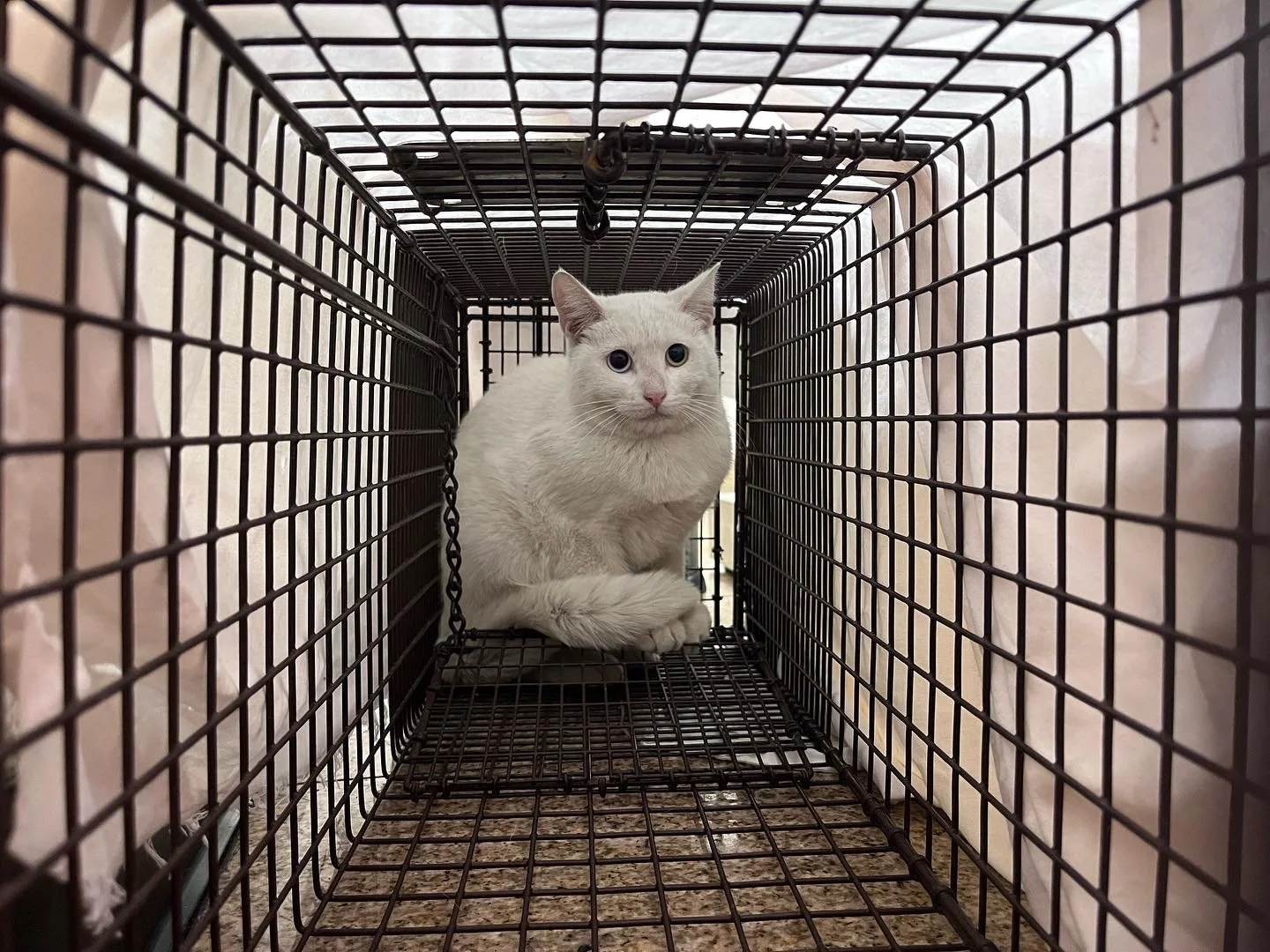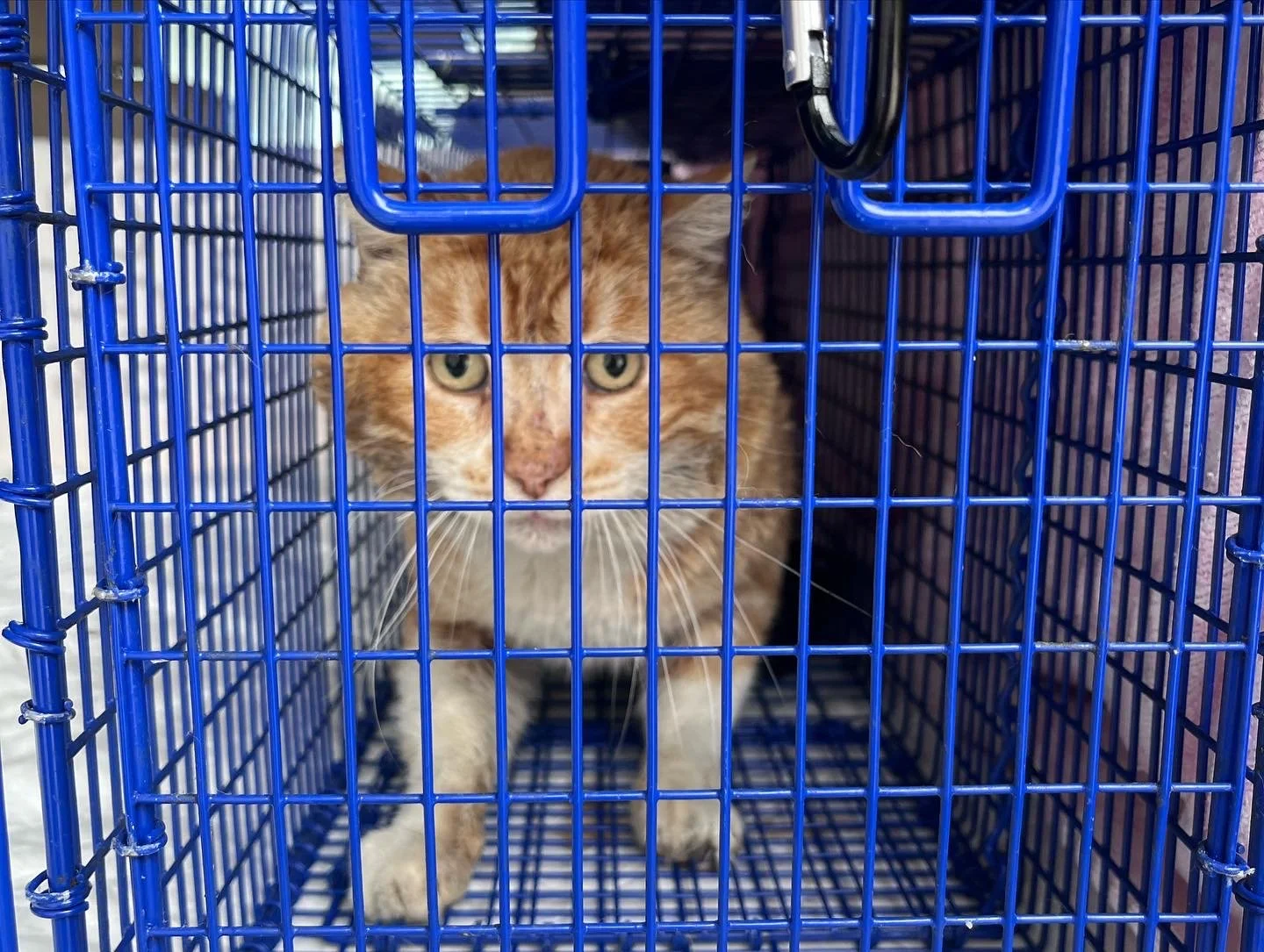Tips & Tricks for Trapping Cats
(Without Losing Your Mind or Your Tuna)
If you’ve ever tried to trap a cat for a spay/neuter appointment, you already know—it’s not always as simple as “put out a trap, get a cat.”
Some cats are curious and walk right in. Others will sniff around the trap all night, stare at you through the window, and act like they’ve never been fed in their life—but still refuse to go inside. (We’re looking at you, trap-savvy tuxedos.)
Whether you're a first-timer or just looking for a smoother process, here are some tried-and-true tips to trap with more success and less stress—for both you and the cat.
🐾 Use a Humane Trap—and Test It First
Always use a humane live trap—never try to catch a feral cat by hand.
Most local shelters or rescue groups can loan you one. Sometimes, veterinarians, police stations and municipal buildings may have traps to loan. Make sure the trap is clean, working properly, and lined with newspaper or a puppy pad to absorb waste.
Cover three sides with a towel or blanket to help the cat feel safe once inside.
If your trap has a back door, make sure it’s properly secured before setting it—many cats have found their way out through a loose or unlatched back door!
If you're trapping kittens, use kitten-sized traps, often called squirrel traps. Small kittens may not weigh enough to trip the plate in a standard full-size trap, and they can slip in and out without getting caught.
🐟 Use Irresistible Bait—and Place It Smart
Cats are driven by their noses, so give them something they can’t resist. Think tuna in oil, sardines, mackerel, or even rotisserie chicken.
Place a tiny bit at the trap’s entrance, a little more midway, and the main portion all the way in the back, behind the trip plate. This forces the cat to walk in far enough to trigger the door.
Sometimes, catnip can be a very good attraction as well.
If you have a few days to prepare, try a technique called “trap conditioning.” Set the trap and tie the door open so it can’t close. Then, place food inside the trap just like you would if it were set—small bits leading to a full portion in the back. Feed the cat this way for several days, so they become familiar and comfortable eating inside the trap. Once it feels like a safe, reliable place to eat, you can untie the door and set the trap for real—greatly increasing your chances of success.
⏰ Don’t Feed Before Trapping—and Pick the Right Time
Withhold food for 12–24 hours before trapping to ensure the cat is hungry enough to go inside. It might feel a little mean, but it’s completely safe—and hunger is your best ally when trying to coax a cat into a trap. Just make sure the cat still has access to fresh water during this time to stay hydrated.
Set traps early in the morning or right before dusk—these are prime roaming hours for most outdoor cats. Choose a quiet, familiar spot where the cat already hangs out. Avoid high-traffic areas or trying to trap when people or pets are nearby—it’ll only make the cat wary.
Once the trap is set… back away. Give the cat space and let the trap do the work.
❌ Never Leave a Trap Unattended
This one’s critical. Once your trap is set, do not leave it unsupervised.
A trapped animal is vulnerable to injury, theft, exposure, or worse. Stay close—ideally where you can check frequently from a distance. As soon as a cat is caught, cover the trap fully with a towel or blanket to reduce stress, and move the cat to a safe, quiet area.
🐾 What If You Catch a Wild Animal?
Sometimes, your trap catches the wrong critter—a raccoon, opossum, or even a skunk might wander in instead of a cat.
If the animal appears healthy and uninjured, you can release it safely on your own by following a few important steps:
Stay calm and quiet to avoid startling the animal.
Point the opening of the trap away from you, toward an open, safe direction where the animal can run.
Stand behind the trap and gently cover the side you're behind with a towel or blanket to help keep the animal calm.
Carefully open the trap door and step back. Most wild animals will bolt as soon as they’re given the chance.
⚠️ If the animal appears injured, sick, or doesn’t leave right away, call your local animal control or wildlife rehab center for help.
✂️ Ear Tip at the Clinic
Make sure the clinic knows to ear-tip during surgery. This small notch on the left ear is the universal signal that a cat has already been fixed and vaccinated—preventing unnecessary retrapping.
It’s painless, it heals fast, and it prevents the cat from being trapped again in the future.
🎯 Return and Feed
Once the cat is alert, recovered, and cleared by the clinic, return them to the exact place you trapped them. It’s their territory, and they’ll know how to navigate it. Leave food and fresh water nearby—it’s a kind way to welcome them home.
In some cases, especially with females or underweight cats, the veterinarian may advise holding the cat in the trap or a recovery crate for a day or two after surgery to allow more time for healing. Always follow the vet’s guidance to make sure the cat is truly ready to be released safely.
TNR Is Tough—but It’s Life-Saving
Trapping cats isn’t always easy, but it’s one of the most powerful, compassionate actions you can take to prevent suffering. Every cat you trap, fix, and return is one less animal facing a future of unwanted litters, harsh weather, and dangerous streets.
And if the cost of surgery is a barrier? That’s where we come in.
At PennyFix, every penny donated goes directly to spay and neuter grants for dogs and cats—including those in TNR programs. We don’t keep a savings account. We don’t send you calendars. We just FUND the FIX—fast.
So grab your trap, bring your tuna, and know that you’ve got a whole community behind you.
You’re not just helping a cat. You’re changing the future—one trap at a time.








